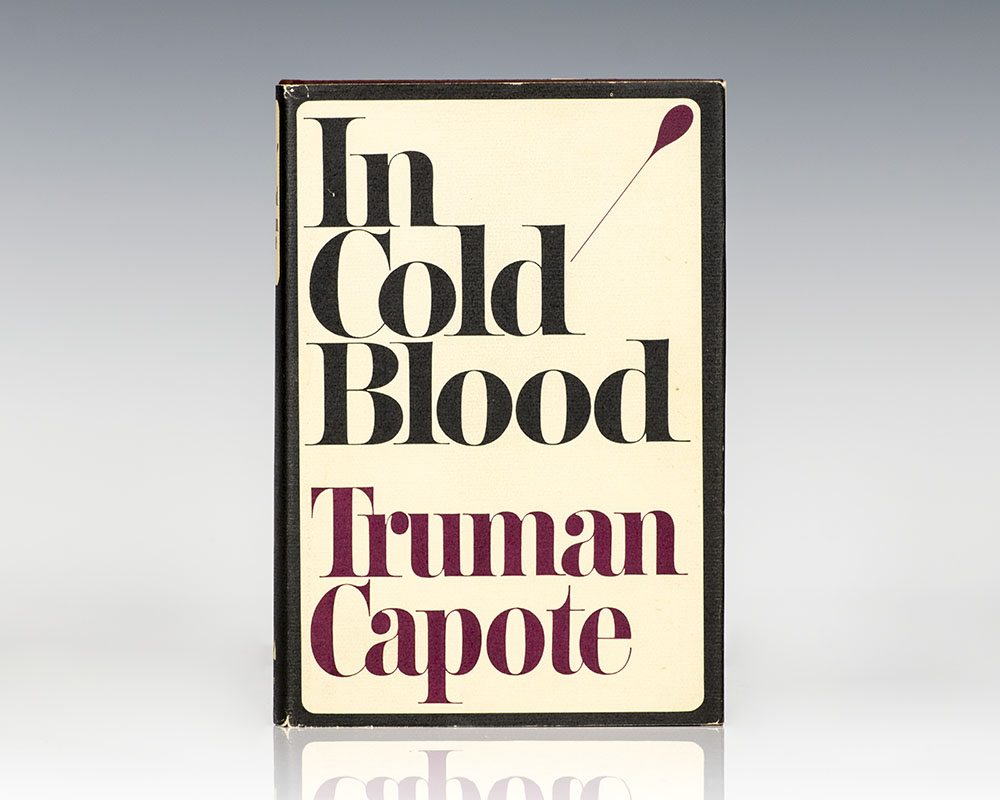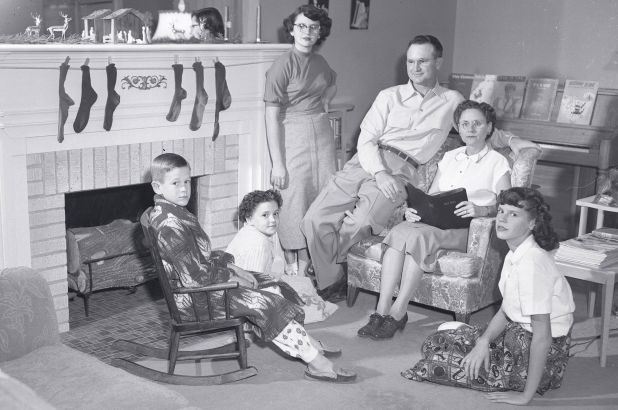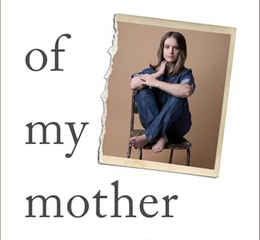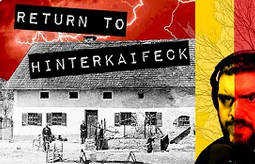
True Crime Studies: An honest review of In Cold Blood
More Videos
Published
5 years agoon
By
Rachel RothI know it seems redundant to review In Cold Blood 54 years after it’s been published. The Withering Heights of true crime books, everyone has most likely heard about it by now though there are many who have yet to read it. I believe everyone should crack it open at least once. It’s largely credited as being the founder of the true-crime genre, making it a classic and one of the pioneers of literature, although I am not one to praise any novel just because it has the word “classic” attached to it. I think people should know more about it other than its status.
Truman Capote changed the literary world forever when he published In Cold Blood in 1966. It details the murders of the Clutter family in 1959 in the small farming community of Holcomb, Kansas. The four victims, Herbert Clutter, his wife Bonnie, and their two youngest children, Kenyon and Nancy were found dead in their house one morning with no obvious signs of robbery or any clue as to who did it. There seemed to be no motive.
In Cold Blood shares the last few hours of their lives before it gets into what the story is really about: the two deeply disturbed men responsible, and honestly…I expected something more. With the kind of reputation that this book has I expected something other than what felt like a two-hour special of Criminal Minds. I know In Cold Blood is more or less the first of it’s kind, so when compared to more recent true crime wonders like Helter Skelter, Devil in the White City and Columbine, it’s a slight let down. But read without expectations, and it is a phenomenal piece of true crime literature.

Hickock and Smith
Perry Smith and Richard “Dick” Hickock are the murderers of this story and one doesn’t have to be there with Capote to know that he had conflicting feelings about them. The beginning of the novel talks much about the Clutter family. Enough to make readers mourn their deaths when it happens but much like how they died, the Clutter’s cease to exist once their hearts all stop beating. Capote drops them as if they never existed, further enforcing the “in cold blood” feeling the crime created when it first happened.
A crime of seemingly random chance. It’s that randomness that truly fascinated the public. “Of all the people in all the world, the Clutters were the least likely to be murdered.”
There are really two narratives in the novel. The confusion of the crime itself and that of Perry Smith. There’s a whole story about the creation of In Cold Blood that claimed Truman Capote became very attached to Smith while interviewing him. Almost too attached some might say, and the novel pretty much confirms this. The amount of time Capote spends on Smith is astounding, even the worst bits are spun in a sympathetic light. He spends pages and pages detailing Smith’s childhood, personality, and motivations while hardly a few paragraphs are saved for Hickock. (Not that I blame him because Dick was truly a dick.)
Make up your mind Capote
By focusing on Smith and his dark, damaged mind, it keeps the shock and pointlessness of the crime front and center. If Capote focused more Hickock it would have taken an entirely different perspective. Smith was harder to pin down and apparently had the capability to do good, which in fact was the alleged point of In Cold Blood. Capote was supposedly trying to humanize the Clutter’s killers, but in all honestly, the novel jumps around too much to make it believable.
Capote added in details that were unnecessary and then dropped them just as quickly. He goes too deep into trivial facts and not deep enough into important ones. He shows so much of Smith’s upbringing, painting him as a victim of his own mind and society, but then throws in a detail that disregards all of that. Then there’s the story of Hickock, the one who instigated the crime in the first place, who Capote doesn’t even try to reform in the reader’s eyes. (Again, I don’t blame him). A psychopathic pedophile rapist who admits that he only robbed the Clutters because he wanted to rape 16-year-old Nancy. (He never did by the way. Smith stopped him before he got the chance.)

Jammed back race to the finish line
The final section of the novel is where it struggles to stay afloat. Smith and Hickock are arrested and sentenced to death but Capote doesn’t stop it there. He doesn’t even skip ahead and show their execution. No. He spends several pages discussing their eventless life on death row. He even goes as far as to introduce some of their neighboring murderers and their life stories. Lowell Lee Andrews a.k.a. “The Nicest Boy in Wolcott” and spree killer buddies George Ronald York and James Douglas Latham. They appear in the final section of In Cold Blood and stick around as if they had been there the whole time. All the while, Smith and Hickock go on, unconcerned about their approaching death date.
Verdict
I was honestly expecting something more chilling than what I got. Over the years, I’ve heard many rant and rave over the sheer cold brutality featured in Capote’s novel, the stuff of nightmares. Maybe it’s because I grew up obsessing over serial killers and read too many books detailing their twisted crimes but what was featured In Cold Blood feels like a combination of attempted psychology and point-by-point descriptions of true-life events but not enough of either. There is also an incredibly long section that deals strictly with their trial that feels a bit redundant. It’s used to include the public perception of them, their reactions to the public, their confessions, and their psyche evaluations but Capote crams everything together as if he was rushing to the finish line.
The true strength of In Cold Blood lies in its style. A true crime book that’s written in the form of a novel starting with a prologue, withholding the gory details until the very end, and ending with two men hanging from the gallows. Despite my complaints, it’s very good.
 (3.5 / 5)
(3.5 / 5)
Rachel Roth is a writer who lives in South Florida. She has a degree in Writing Studies and a Certificate in Creative Writing, her work has appeared in several literary journals and anthologies. @WinterGreenRoth

You may like
Book Reviews
The Hotel: We’ll All Be There Soon.
Published
2 weeks agoon
March 17, 2025By
C M ReidDaisy Johnson’s, The Hotel is a collection of stories that tell the tale of a hotel built on cursed land. Originally written and recorded as a series for BBC Radio 4 in 2020, (you can find the recordings here https://www.bbc.co.uk/programmes/m000mrcg/episodes/player )
The fourteen-story collection was released in hardcover in 2021. Johnson’s prose is haunting, weaving together the stories of generations of families who have been tempted, forced, or serendipitously dumped at The Hotel. Most leave the message, “I’ll be there soon,” and many disappear from room 63.
- ‘The British literary heir to Stephen King’ Johanna Thomas-Corr, Sunday TimesA triumph of contemporary horror from the Booker Prize-shortlisted author, this collection of short stories will haunt you long after you turn the final pageA place of myths, rumours and secrets, The Hotel looms over the dark Fens, tall and grey in its Gothic splendour
- Built on cursed land, a history of violent death suffuses its very foundations –yet it has a magnetism that is impossible to ignore
- On entering The Hotel, different people react in different ways
Last update on 2025-03-17 / Affiliate links / Images from Amazon Product Advertising API
The Plot.
The Hotel tells the stories of the people who are drawn to The Hotel, or, more accurately, the ground the hotel is built on. The first story explains what we know about the hotel, its tendencies, moods, and … hobbies. We are then introduced to Mary Southgraves, ‘The Witch’, who comes to live with her husband on the land on which The Hotel will be built. The villagers in the pond drown her for predicting a sickness that takes the village children, (no this is not a spoiler she tells you she dies on the first page of her chapter.)
The proceeding chapters build upon this story. We meet the workers who are brought in to fill the pond to begin construction. A child of a guest in 1968 who meets another girl who may or may not actually be there. A maid who takes part in séances and Ouija board sessions. The stories progress through time into the present.
Highlights.
The haunting prose of The Hotel does the majority of the heavy lifting for this collection, which makes sense since it began as a podcast series. Johnson’s prose leans towards poetry, albeit more Poe than Keats.
The repetition of specific characters and family names throughout the different stories was intriguing, giving the stories links. These links trigger a sense of recognition for the reader. There is also a sense of anticipation, knowing what has happened to these families already, we wonder how much more they can withstand. The Hotel is like a curse following these families, but I think Johnson is commenting on lineage and the consequences of past actions. The sins of the father and all that.
- Fifteen highly original and darkly unsettling supernatural stories, performed by some of Britain’s finest actresses ‘This is what we know about The Hotel
- It is bigger on the inside than on the outside
- Do not go into Room 63
Last update on 2025-03-17 / Affiliate links / Images from Amazon Product Advertising API
Drawbacks.
These stories can get confusing at times and I think this is due to the briefness of the stories. It’s hard to keep track of a character that you have spent four pages with and remember them three stories later. I found myself having to stop and turn back to check if that person was who I thought they were. This pausing to turn back interrupts the reading experience. It pulls you out of the story and destroys the atmosphere that Johnson has worked to create.
The Final Take.
The Hotel was an interesting read. Johnson is a talented writer who has published a collection of linked stories that will keep the reader turning pages if only to find out the final fate of these families. That being said, it is obvious that the stories were initially written for a podcast. I’m not sure if it’s the way they are put together or… I don’t know, there’s just something ‘podcasty’ about them. As such I would recommend listening to the audio episodes (see the link above) over reading the book.
 (3 / 5)
(3 / 5)
On Halloween in 2016 Josh Malerman, author of Bird Box, released A House At The Bottom Of A Lake (gosh this is a hefty title!). Last week, I picked this slim book up off my library’s Adult Horror shelves, not knowing what to expect. What I got was a novella that should have been shelved in the teen lit section. Perhaps it is the rather weird underwater sex scene that precludes it from those shelves.
- From the New York Times bestselling author of Bird Box and Malorie comes a haunting tale of love and mystery, as the date of a lifetime becomes a maddening exploration of the depths of the heart
- “Malerman expertly conjures a fairy tale nostalgia of first love, and we follow along, all too willingly, ignoring the warning signs even as the fear takes hold
- ”—Lit Reactor The story begins: young lovers, anxious to connect, agree to a first date, thinking outside of the box
Last update on 2025-03-10 / Affiliate links / Images from Amazon Product Advertising API
The Plot.
When James asks Amelia out on a date during summer break, canoeing was the last thing that she expected. Borrowing his uncles canoe, James hopes he can show Amelia an exciting time, because he really likes this girl! The date starts well and the conversation, if stilted at times, is banter-ey and cool.
They head out on the first lake, but James has an idea that they might have a better time on the lake that joins to this one. It is quieter, no speed boats to show him up, they’ll be able to eat their picnic lunch in peace and quiet. When they arrive, though, they notice a tunnel, that may lead to a third lake. Eager to show Amelia that he is an exciting kind of guy, James heads through the tunnel.
Lo and behold, it is another lake! Albeit, a bit murky and deserted, but that’s alright. That is until they notice that beneath the bow of the boat is a tiled roof. Beneath that tiled roof is a whole house. What ensues is a summer of falling in love and exploring a sunken house that may not be as empty as they thought.
Highlights.
Malerman writing the internal monologue of an angsty seventeen-year-old on a first date is one of the most authentic things I’ve read for a long time. Even down to James worrying about revealing that his dad owns the hardware shop he works in. Scared that Amelia will think that is all he is going to do with his life.
The ending (which of course I cannot discuss here) was well done, although a little contrived and predictable. It felt as if it had been almost tacked on the end as an afterthought. Perhaps Malerman finished the story without the final chapter, but was encouraged to add that last bit to give readers some closure
- “A book that demands to be read in a single sitting, and through the cracks between one’s fingers
- There has never been a horror story quite like this
- Josh Malerman truly delivers
Last update on 2025-03-10 / Affiliate links / Images from Amazon Product Advertising API
Drawbacks.
Malerman is a good writer, we have seen this in the many novels he has released since Bird Box. A House At The Bottom Of A Lake did not meet the usual standard. There are many reasons I say this. The first is a lack of creativity in descriptive passages in this book. They all felt pretty drab and began to become repetitive by the end of the story. I don’t know how many, times Malerman compared the way that James and Amelia were moving under the water in their scuba suits as ‘Astronaut-like’ or ‘Astronaut-esque’ or ‘ Like he was walking without gravity’, but really can you find another comparison please because this one is all used up!
As I mentioned in the intro, this did feel like a YA novel. Not only because both of the main characters are seventeen, but the prose is a too simple to be engaging. A House A The Bottom Of A Lake might be marketed differently in Australia (where this humble reviewer lives), perhaps making it to the YA shelves in the US or UK, but this is definitely not adult horror.
The Final Take.
Josh Malerman is a favorite of mine. I tend to pick up his books, blurb unread, because I will generally enjoy what he is putting out there. The exception to this rule is A House At The Bottom Of A Lake (if I never have to type that title again I will be pleased!). It just didn’t hit the way his other novels have and I was disappointed.
 (2 / 5)
(2 / 5)
Imagine this. You’re home alone, waiting for your partner to return, when you hear a knock on your door. You answer it to see a family of five, bundled up against the cold. The father, a kindly older gentleman, explains that he used to live in this house as a boy. And he would love to show it to his family.
Do not let them in.
The story
Released in June 2024, We Used To Live Here is author Marcus Kliewer’s debut novel. It tells the story of Eve, who just purchased a beautiful house with her partner, Charlie. Their plan is to flip the house and sell it.
One night, while waiting for Charlie to come home, Eve is surprised by a knock at the door. It’s a man named Thomas Faust and his family.
Thomas explains that he grew up in the house and hasn’t been in the area in years. Would Eve let them in so that he can show the home to his children?
Against her better judgment, Eve lets them in. She regrets this almost at once when Thomas’s daughter vanishes somewhere into the house.
What worked
I always appreciate a book that allows you to play along with the mystery. And this book does that better than just about any other I’ve seen.
Pay close attention to the chapters, to the words that aren’t there. To everything about this novel.
This is mostly down to Kliewer. This is ultimately his work of art. But the production value is also fantastic. I don’t want to ruin the multiple mysteries, so I’ll just say this. There are clues in this book that require some specific artistic choices in the page layouts in this book. And I loved that.
If you’d like to experience another horror book review, check out this one.
We Used To Live Here is also the kind of story that makes you question everything right along with the main character, Eve. Eve is a great main character. But she might be an unreliable narrator. She might be experiencing every single horror described, exactly as it’s described. Or, she might be having a psychotic breakdown. Through most of the book, we can’t be sure. And that is so much fun.
Finally, the weather plays a large part in this story. There are several stories in which the weather or the land itself could be considered a character. Even an antagonist. This is certainly one. The winter storm is the thing that traps the family in the house with Eve. It also makes escaping the home difficult. Reading this book during the winter was especially impactful. Most of us know what it feels like to be shut in by a storm. I’ve personally lived through some of those storms that are just referred to by their year, as though they were impactful enough to claim the whole 365 days for themself. And that was with people I liked. Imagine what it would feel like with strangers. It’s a staggering thought and one that we explore in depth in this book.
- Get Out meets Parasite in this eerily haunting debut and Reddit hit—soon to be a Netflix original movie starring Blake Lively—about two homeowners whose lives are turned upside down when the house’s previous residents unexpectedly visit
- As a young, queer couple who flip houses, Charlie and Eve can’t believe the killer deal they’ve just gotten on an old house in a picturesque neighborhood
- As they’re working in the house one day, there’s a knock on the door
Last update on 2025-03-08 / Affiliate links / Images from Amazon Product Advertising API
In the end, We Used To Live Here is a fantastic book. It’s the sort of story that sneaks into your brain and puts down roots. And if this is just the first book we’re getting from Kliewer, I can’t wait to see what else he comes up with.
 (5 / 5)
(5 / 5)








